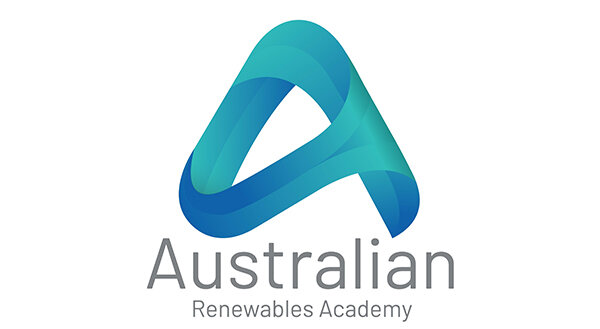It’s Time to Stop Regulating the Solution Like It’s the Problem
Australia is sprinting toward a clean energy future—but stuck wearing shoes built for a different race. The frameworks we’ve relied on to protect our environment are now some of the biggest barriers to decarbonising it.
At the Australian Renewables Academy (ARA), part of the Management Governance Australia Group, we work with people building the future—developers, Traditional Owners, policy thinkers, engineers, investors and decision-makers. And they’re all hitting the same wall: outdated environmental approval processes that are not fit for purpose.
Right now, renewable energy projects are taking three to seven years to get from concept to construction. Not because the tech isn’t ready, or the investment isn’t there—but because we’ve overlaid 20th-century regulatory frameworks on top of a 21st-century transformation.
That mismatch is costing Australia time, capital and credibility.
We Need to Rethink “Environmental Risk”
It makes no sense that a 1 GW solar farm is subject to the same environmental approval process as an open-cut coal mine. One is part of the solution, the other part of the problem. Yet our systems don’t currently distinguish between the two.
This isn’t about “cutting corners.” It’s about recognising the environmental benefits of decarbonisation and building a planning system that balances protection with progress while taking account of the concerns and issues of landholders.
Gregory Samuel’s 2020 review of the EPBC Act couldn’t have been clearer: Australia’s federal environmental law is “not fit to address current or future environmental challenges.” It’s duplicative, slow, and often opaque. The Clean Energy Council, the Productivity Commission, and the Net Zero Australia project have all echoed the same point: Australia must significantly accelerate (about triple, according to some) the renewable energy rollout by 2030 to have any realistic chance of meeting net zero by 2050.
What “Abundance” Tells Us
In their 2025 book, 'Abundance', Ezra Klein and Derek Thompson argue that the greatest barriers to solving today’s biggest challenges—like the transition to clean energy, affordable housing, and resilient infrastructure—are not technological or financial, but institutional.
They highlight how over-regulation, bureaucratic inertia and political gridlock have stifled progress in high-need areas. Their proposed “Abundance Agenda” calls for a new policy mindset (in the US, as well as in other countries): one that prioritises building over blocking, accelerates delivery through smarter governance, and embraces ambition in the face of climate, demographic, and economic pressures.
This argument is particularly relevant to the clean energy transition in Australia. We have world-class solar, wind, and energy talent. But our approval systems treat renewables as if they’re a risk to be managed, not a necessity to accelerate.
While technology is moving exponentially, governance and regulation are moving linearly. That’s a dangerous gap, and one we urgently need to close.
What Needs to Change
At ARA, we’re interested in reforms that allow environmental protection and renewable deployment to move together—strategically and at speed. Here’s what that looks like:
Fast-track pathways for low-impact renewable energy and storage projects.
Whole-of-system environmental assessments, recognising the cumulative benefit of decarbonisation.
Strategic approvals for Renewable Energy Zones, reducing duplication and increasing investor confidence.
Early and deep engagement with communities and Traditional Owners, done with integrity—not as a box-ticking exercise (hint: regional communities can tell you're not really consulting them if you're not writing or recording what they're telling you!).
These aren’t radical ideas—they’re already being piloted in places like NSW. What we need now is national leadership to scale them up and systematise them.
The Cost of Delay
Every delay has a cost. Lost time. Lost momentum. Lost trust.
And as the International Energy Agency has clearly stated, we can’t afford that delay: no new fossil fuel infrastructure after 2030, full grid decarbonisation by 2040. That clock is ticking fast.
At MGA Group, through the @Australian Renewables Academy, we’re committed to working with others for regulation and reform that keep pace with the ambition and urgency of Australia’s clean energy industry while ensuring proper consultation with regional communities that may be impacted during project construction and operations.
We don’t need to choose between environmental protection and clean energy delivery. In fact, we can’t afford to separate the two.
The future is here. Let’s stop regulating it like a threat—and start planning for it like the opportunity it is.
Let’s talk. If your organisation is facing regulatory roadblocks—or if you're trying to build trust, clarity and alignment across the approvals landscape—we’d welcome a conversation.
References
Clean Energy Council (2023). Renewables Report Card.
Samuel, G. (2020). Independent Review of the EPBC Act – Final Report.
Net Zero Australia (2022). Modelling Outcomes Report.
ARENA (2023). State of Hydrogen 2023.
IEA (2023). Net Zero Roadmap: A Global Pathway to Keep the 1.5°C Goal in Reach.
NSW DPIE (2024). Renewable Energy Zones Strategic Approvals Program.
Productivity Commission (2023). Advancing Clean Energy Investment.
CEFC (2024). Annual Report 2023–24.
Klein, E & Thompson, D (2025), Abundance
#CleanEnergy #EnvironmentalApprovals #NetZero #Leadership #AustralianRenewablesAcademy #MGAGroup #StrategicReform #Decarbonisation #AbundanceMindset #EnergyTransition #FutureFocused

